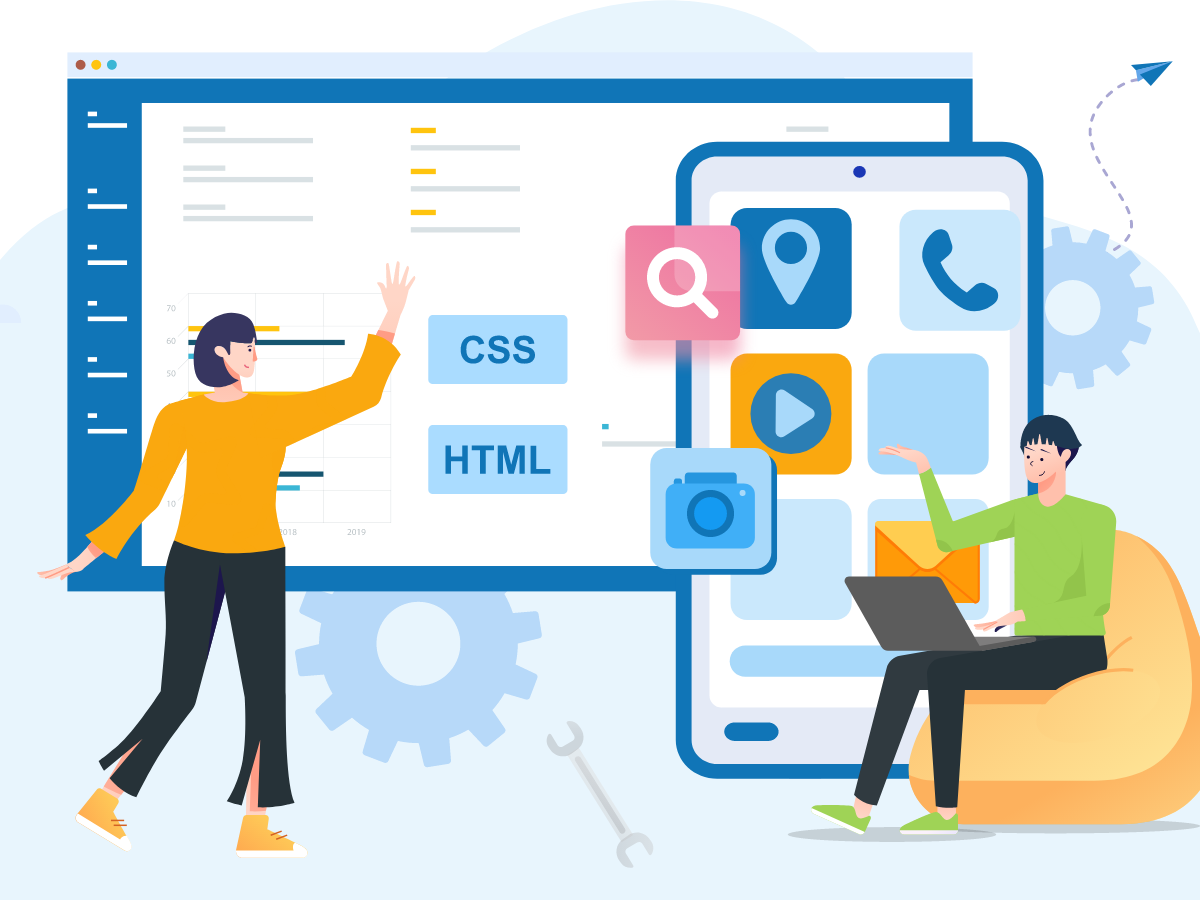
Rated ⭐ ⭐ ⭐ ⭐ ⭐ 4.9

Building a website does not end with the design and development process. It includes the pre/post launch and launching process. Launching the website is a big step for any industry or organization as it is the digital identity of the brand/product. The website helps to connect with potential users across the globe.
Having a website increases the credibility of the business and gives people the comfort of the business.
Every website has a different goal and purpose, and its requirements vary according to it. However, few general guidelines are common for any kind of website. Let’s see what those common checklists are.
This is the most important and common step that we follow in any process. In this stage, we review and proofread the premium content and page contents, and we make sure that the images and videos uploaded on the website are working properly. Also, we review the title tags, meta description, links, and formatting.
This is the best time to check on the content strategy to ensure that the website is SEO-friendly. Use certain SEO techniques like, perform keyword research and prepare a content strategy based on it. Include unique meta descriptions and page titles, also optimize pages to rank organically. Check the legal contents (terms of service, privacy policy, copyrights, etc)

The website design is the mirror of the brand and the product. So, before launching the website we have to look for any design issues and make sure to rectify them. We have to compare the approved design and the final web design. Our main goal is to achieve the client’s requirements. The user experience should be smooth and easy to navigate.
In this era, mobile devices have become indispensable and potential customers access the website via their tablets or smartphones. We have to make sure the website is mobile responsive and test it on the mobile device and fix the bugs. Also, the collapsible menus are convenient options as it saves space.

Before launching the website, we have to see every single element on the website and check the functional aspects. We start from the contacts page as it allows the potential users to be in touch. Test the call-to-action forms, comments, email listing sign-ups, lead generation, and other payment-related functionalities. Check the social media icons, whether it is directing the right pages and if the share function works accordingly.
Link the logo to the homepage as it is easier to navigate. Have functional buttons with different functions and purposes. Users visiting the website should not stumble in going through the site, so the on-site navigation must be accurate and work smoothly.

By setting up the analytics, we can continuously help understand user behavior and improve the website. It is very important to measure the user’s involvement towards the website, the number of visits they make, how long they stay, pages they visit, and whether they return. This helps in identifying the specific performance indicators that increase the conversion rate.
The analytics categorizes the data into different sections based on audience details, their behavior, and campaign data. Many web analytics tools offer specialized information and help simplify data analysis

A safety precaution is always a best practice. Having a backup solution is the only way to protect the data from loss and malware attacks. Because building a website from scratch is not an easy task, and when the website has many active blogs and pages it is not something to neglect.
Especially in this era, the company will lose a major portion of its revenue when the site is offline. Be it a business, e-business, or a service provider website; losing the costs of time, money, and stress.
We can use online or offline backup services to protect the website. However, the offline backup is quite a tedious process where modifying a single code also costs a lot. The online backup is an effortless, secure, and speedy recovery procedure.

Many businesses assume that the website development team supports the website for a lifetime; however, that is not the case. In general, the website development team offers a guaranteed 30 days of support after the launch of the website.
We can discuss the support and maintenance well in advance so that it is beneficial for both parties. It is significant to have an exclusive team to support and maintain the website post-launch.
Similarly, we have to plan the marketing campaign for the website post-launch. Post-launch marketing is significant to track more potential customers to the website. Generally, it is best to plan the campaign after a couple of days of the launch. It gives them time to fix minor changes. Remember, marketing is a big boon for the website, and having a team to plan the campaign is ideal.

Well, finally when the website is ready for launch. Prepare something interesting for the launch of the website, as the work involved to build the website was not simple. The preparation before launching the site benefits the people who visit the website, the existing customers, and prospects.

We have seen all the common checklists that are required for launching the website. There are additional checklists available based on the purpose of the website. The pre-launching, launching, and post-launching elements might be challenging. However, it is necessary to be prepared and ready with proper planning. Along with an expert team, the entire process becomes a cakewalk.
CONTACT US
Partner with Autuskey to build a remote, Agile software development team. Partner with Autuskey to build a remote, Agile software development team.

Rated ⭐ ⭐ ⭐ ⭐ ⭐ 4.9